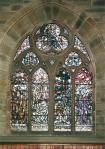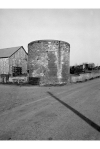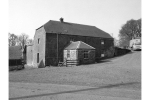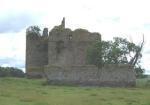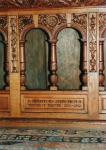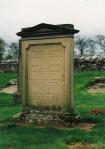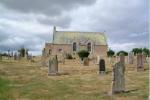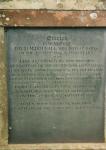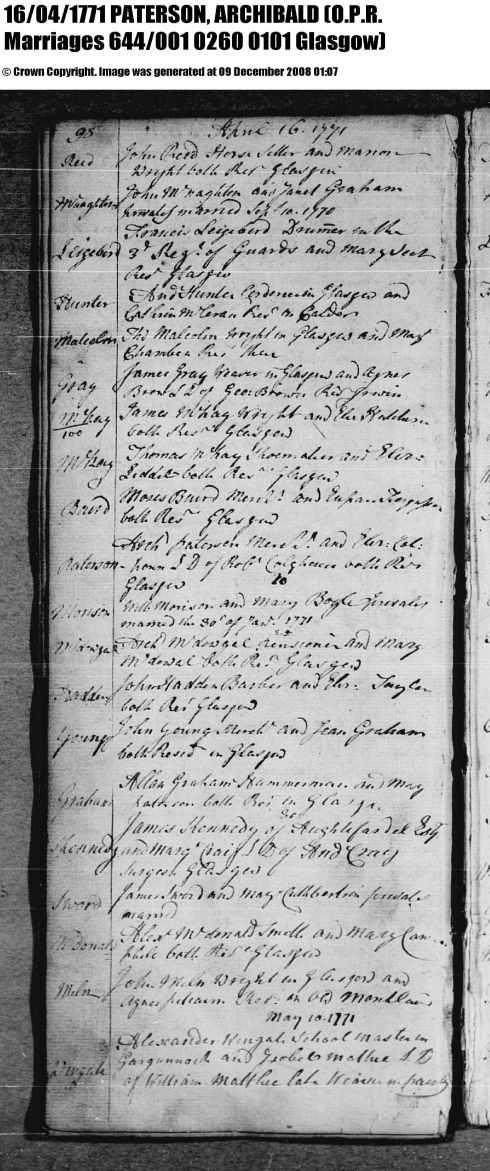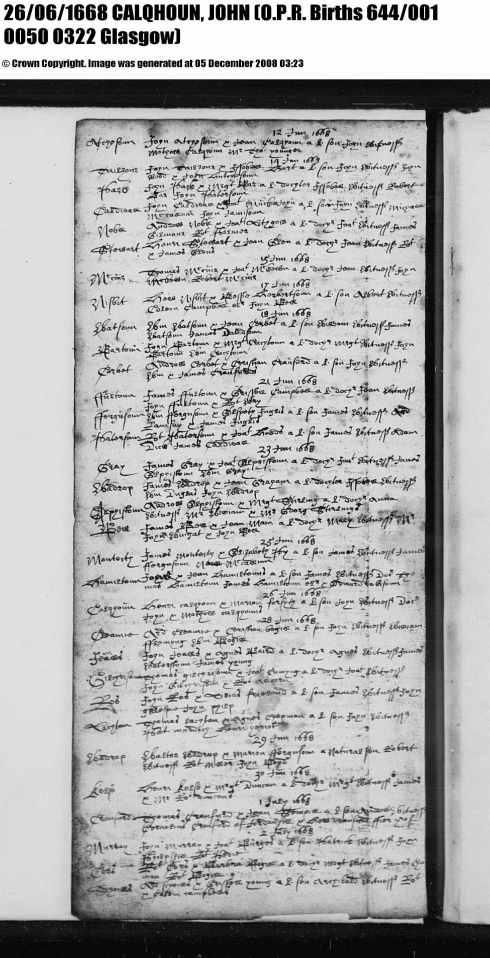Category Archives: McDougall / Yair / Paterson / Colhoun / Lamb
Photo Album, Ednam
Leave a comment | posted in McDougall / Yair / Paterson / Colhoun / Lamb, Photo Albums
Photo Album, Caverton, Cessford
1 Comment | posted in McDougall / Yair / Paterson / Colhoun / Lamb, Photo Albums
Photo Album, Eckford
Leave a comment | posted in McDougall / Yair / Paterson / Colhoun / Lamb, Photo Albums
McDougall & Kinlay Families of Steven Kinlay
Leave a comment | tags: David McDougall, Eckford, Kinlay, McvDougall, Steven Kinlay | posted in Family Trees, McDougall / Yair / Paterson / Colhoun / Lamb, Reference Material, Stories
Archibald Paterson, Misc Notes
Petition against Polloc and Govan Railway Bill.
A Petition of Archibald Paterson, in Tradeston, of Glasgow, was presented, and read; taking notice of the Bill for making and maintaining a Railway from the Lands of Polloc and Govan to the River Clyde, at the Harbour of Broomielaw, in the County of Lanark, with a Branch to communicate therefrom; and praying, That the same may not pass into a law as it now stands.
Ordered, That the said Petition be referred to the Committee on the Bill.
CHARLOTTE STREET, called after the queen of George III., was opened by Mr. Archibald Paterson, partner with David Dale. He built the first Independent Church in Glasgow. Paterson Street, on the south side, is called after him. Charlotte Street, especially its southern part where it had gates, was long the residence of the rich. The philanthropic David Dale, one of the foremost of Glasgow citizens, had his town residence here. He was always ready to forward every scheme calculated to benefit his fellow-men, to ameliorate the condition of the outcast or orphan, or to reclaim the vicious and the criminal. Dale Street, Bridgeton, and Dale Street, Tradeston, are called after him. His name is still fragrant in Glasgow.
[http://gdl.cdlr.strath.ac.uk/airgli/airgli0104.htm]
Preserving the Bishop’s Castle, Glasgow, 1688-1741
Athol L Murray*
ABSTRACT
This paper examines the accepted view that the Bishop’s Castle (the palace of the Archbishop of
Glasgow) fell into ruin after 1688,and draws on unpublished documents to add to the existing
knowledge of the building and to trace the efforts to save it between 1688 and 1741.
As existing authority in both Church and State disintegrated during the winter of 1688-9, John
Paterson, Archbishop of Glasgow, retired behind the high walls of his palace. Stones lay piled on
the gatehouse roof, in readiness ‘for throwing down in case the rabble should have made any
attempt upon him.’
1
He had good cause to be afraid. Rebels who had seized the building less than
ten years earlier had destroyed Archbishop Burnet’s possessions, ‘And it may reasonably be
presumed this Reverend Prelate had fell a sacrifice to their Devilish fury, had he been in their
way.’
2
Within a few months, Paterson, translated from the bishopric of Edinburgh as recently as
March 1687,was deposed along with his fellow prelates. In 1697 he was allowed to return from
exile to Scotland, where he died in December 1708.
3
His palace, the Bishop’s Castle,
4
one of the
most prominent buildings in Glasgow, had fallen into the hands of the Crown along with other
property of the archbishopric.
If we are to believe one contemporary description the building was ‘formerly without doubt a
very magnificent structure, but now in ruins, and has no more in repair than what was the ancient
prison, and is at this time a mean dwelling.’
5
Hitherto unpublished documents throw doubt on the
accuracy of this statement and reflect intermittent efforts over the next 50 years to preserve the
building. These are the survivors of a much larger body of documentation destroyed or lost by a
fire at the Scottish Court of Exchequer in 1811. The most important are printed as Appendix 2. The
earliest, an estimate for repairs submitted in 1693,shows that the Castle was then far from ruinous,
its dilapidated state being largely attributable to neglect in the four years since Paterson’s
deposition. Extensive, though undocumented, repairs had been carried out as recently as 1674-5,
at a cost of £651 Scots
[http://74.125.113.132/search?q=cache:ME0kt_I1rPAJ:ads.ahds.ac.uk/catalogue/adsdata/PSAS_2002/pdf/vol_125/125_1143_1161.pdf+Archibald+Paterson+of+Glasgow&hl=en&ct=clnk&cd=8&client=safari]
[http://catalog.loc.gov/cgi-bin/Pwebrecon.cgi?DB=local&CMD=lccn+27000259&CNT=25+records+per+screen]
The Creation of Kilmory Village
Perhaps influenced by the rising importance of the nearby villages of Ardrishaig and Lochgilphead, both of which had been planned and created in the first decade of the nineteenth century by an adjoining proprietor, John McNeil of Gigha, Sir John, too, planned his own village.
It was, admittedly, a very diminutive one known as the village of Kilmory, built close to Lochgilphead from which it was separated by a tiny burn. The tenements of the village lined the streets leading up to the White Gates beyond which were the grouunds of the Kilmory estate. Paterson’s Lands or Paterson Street commemorates the name of the builder, Archibald Paterson, who obtained a feu of the site in 1829. A quay was constructed for the use of the fishermen in the 1830’s at Sir John’s expense, whilst Lady Orde provided a girls charity school. The village maintained its fragile identity until the 1840’s but was increasingly considerred to be part of Lochgilphead until 1858 when it was formally incorporated within the boundaries of the Police Burgh of Lochgilphead.
[http://www.argyll-bute.gov.uk/content/leisure/heritage/kilmory]
Colhoun (Colquhoun) of Glasgow family papers Ref: TD 301 The Colhoun (also Colquhoun) family of Trongate in Glasgow were involved in the tobacco trade and slave trading throughout the 17th century. This collection comprises 9 files of business and family papers for the Colhoun family of Glasgow. During the 18th century the family were involved in the slave trade and the letters found in file TD301/6 document the experiences of William Colhoun, who worked as chief mate on a number of slave ships travelling between West Africa, North America and Britain between 1768-1776. In file TD301/6 there are nine letters to Miss Betty Colhoun of Trongate Glasgow, from her brother William, 1768-1771. In 1769 William sends letters from his voyages on the “Trent” man-o-war, and ships called the “Bellsavage” [sic] and the “Industry.” One of his letters, dated June 1770, is written from Senegal in West Africa, telling his sister about his first experiences aboard a slave trader. He states “We shall sail tomorrow with a hundred and 50 slaves for Potouchan River in Virginia in a very fine vessel which I am chief mate of…it is a very precarious cargo as for me it is the first time…we have always plenty of noise and stink in proportion.” His next letter, dated October 1770, was written in Oxford, Maryland, and tells Betty that the slaves were sold there and the ship is returning to Glasgow loaded with tobacco. Later his sister marries a Glasgow merchant, Archibald Patterson, and William continues to write to Patterson about his dealings in slaves. In one letter, written from Sierra Leone in April 1775, he promises to send “three prime slaves which will amount to 120 pounds sterling” to be sold, whenever he can finds the means to remit the proceeds to Archibald, and “…a very fine girl about twelve years of age” which he will send home to Glasgow if one of his sisters would like her. In a later letter from Yongia, Dimba River, dated May 1776 he writes, “I have sent likewise by Captain Richard Wilding of Liverpool two fine slaves to be sold at the West Indies and the money or bills to be remitted to you…The slaves will come to about 80 pounds sterling.” The remainder of the collection contains miscellaneous 18th and 19th century family letters and accounts, primarily concerning the management of cotton spinners in Scottish-based cottage industries.
[http://74.125.113.132/search?q=cache:rv0NMf2oP6MJ:www.casbah.ac.uk/surveys/archivereportGLAS.stm+Archibald+Patterson+Glasgow&hl=en&ct=clnk&cd=4&client=safari]
PA
Paterfon’s Mrs. feed fhop, Trongate, No. 78 Paterfon Archibald, tallow-chandler, fhop fouth fide Gallowgate, No. 130 Paterfon Thomas, brewer and maltman, St. Enoch’s wynd Paterfon John, fpirit-dealer, Argyle-ftreet Paterfon James, hair-dreffer, fouth fide Argyle-ftreet
[http://www.glasgowhistory.co.uk/Books/1787Directory/DirectoryFrame.htm]
Up till 1760, the severity of the ancient manners prevailed in full vigour: no lamps were lighted on the Sunday evenings, innocent amusements were denounced, and people were actually prevented from walking on the day of rest. In order to enforce this regulation, the magistrates employed certain persons named “compurgators,” whose duty was to perambulate the streets and public walks during divine service every Sunday, and to take offenders into custody if they refused to go home when ordered. A party of these men, on duty at the Green, thought proper to apprehend Mr Peter Blackburn – a prominent citizen, and ancestor of Mr. Blackburn of Killearn; and the result was that Mr. Blackburn prosecuted the magistrates before the Court of Session, and put an end to the “compurgatory” system of Sabbath-keeping. This Mr. Blackburn was a member of the famous “Hodge-Podge” Club, along with the father of Sir John Moore, and other celebrities, and figured in the rhyme-register of the club (written by Dr. Moore) in the following fashion:-
[http://www.glasgowhistory.co.uk/Books/1787Directory/DirectoryFrame.htm]
| PATRICK COLQUHOUN
|
An eminent merchant, and one of the most popular Lord Provosts that Glasgow ever had. At this time he resided in the second floor of an old tenement in Argyle Street; and yet he was rather proud of himself as a provost. On one occasion, while apologizing for some mistake on the part of an official, his lordship said, “even I myself have made a mistake!” a saying that was not soon forgotten. Mr Colquhoun was the originator of the Chamber of Commerce, in 1783; and in 1789 he settled in London, where he became Chief Police Magistrate of the metropolis.
[page 56]
[page 59]
An inveterate prejudice existed at this time against the sad and sorrowful defection of Independency, arising from the belief, not yet wholly extinct, that soundness in the faith was somehow linked with Presbyterianism alone; so the new sect found but little public sympathy. The first teaching elders in the communion, Mr. Dale and Mr. Ferrier – who had been a minister in the old church of Largo – were hustled on the public streets, and found themselves often obliged to take shelter under some friendly roof. Even the modest “Caunnel Kirk” came in for a share of the common rough usage, till the authorities were called upon to interfere. The prevailing dislike then assumed another form. Crowds of mischievous lads filled the little church to turn the service into ridicule. On one occasion, it having been announced that a certain Mr. Smith was to take part in the services, some of these wicked wags got up a signboard in imitation of a country blacksmith’s, which was fixed above the door of the church, with the inscription, – “Preaching done here by David Dale, Smith and Ferrier!” All these annoyances Mr. Dale soon lived down. The little congregation grew in numbers and influence, and some of its old adherents – for the Communion still exists, under the name of the Old Scotch Independents – tell with justifiable pride of the ranks of carriages that stood in the Grammar School Wynd, waiting on the “skailing” of the Candle Kirk.
[http://74.125.113.132/search?q=cache:reJ_SIYCQg8J:gdl.cdlr.strath.ac.uk/stecit/stecit04.htm+Archibald+Patterson+Glasgow&hl=en&ct=clnk&cd=11&client=safari]
Petition against Polloc and Govan Railway Bill.
A Petition of Archibald Paterson, in Tradeston, of Glasgow, was presented, and read; taking notice of the Bill for making and maintaining a Railway from the Lands of Polloc and Govan to the River Clyde, at the Harbour of Broomielaw, in the County of Lanark, with a Branch to communicate therefrom; and praying, That the same may not pass into a law as it now stands.
Ordered, That the said Petition be referred to the Committee on the Bill.
[http://74.125.113.132/search?q=cache:oitJn51ukwMJ:https://www.british-history.ac.uk/report.aspx%3Fcompid%3D16212+Archibald+Patterson+Glasgow&hl=en&ct=clnk&cd=14&client=safari%5D
| The Anecdotage of Glasgow Mr. David Dale’s grand dinner under difficulties |
| THIS celebrity of old Glasgow, who was yarn merchant, cotton spinner, banker, and pastor to “The Old Independent” congregation, had his city residence in Charlotte Street, and to it he had invited a large party of wealthy guests to dinner on the 18th day of November, 1795.
Among those expected were William Simpson, cashier of the Royal Bank; Gilbert Innes of Stowe, the great millionaire; and the whole posse of the Royal Bank Directory from Edinburgh to meet with Scott Moncrieff, George MacIntosh, and other Glasgow magnates. On the morning of that important and memorable day, all was bustle and hurry-burry in preparation for the sumptuous feast. All went on as well as could be wished until near the appointed hour; when lo! the waters of the Clyde began to ooze slowly but surely through the chinks of the kitchen floor, and ere long the servants were wading about with the water above their ankles. At length the Monkland Canal burst its banks, and like a mighty avalanche the waters came thundering down by the Molendinar Burn, carrying all before it, and filling the low-lying districts of the city in Gallowgate, Saltmarket, Bridgegate, and under portions of St. Andrew’s Square with a muddy stream. The Camlachie Burn also, which ran close by Mr. Dale’s house, rose to an unusual height, and burst with a fearful crash into Mr. Dale’s kitchen, putting out all the fires, and forcing the servants to run for their lives. Then came the question—What could or should be done in this unhappy dilemma? The dinner hour was fast approaching, and the invited guests would soon be there! In this distressing predicament, Mr. Dale applied to his opposite neighbour, William Wardlaw, Esq. (father of Rev. Dr. Ralph Wardla*), and to Mr. Archibald Patterson, another neighbour, for the loan of their respective kitchens, both of whom not only granted the use of their kitchens, but also the help of their servants. But here the further question arose—-How were the wines, spirits, and ales to be got from the cellar, which now stood four feet deep in water? After some cogitation, a porter was hired, and, being suitably attired for the occasion, he received instructions to go down into the deep and bring up the drinkables required. Here again another problem had now to be met and solved—How was the porter to distinguish the respective bins of port, sherry, and Madeira from those of the rum, brandy, porter, and ale? This difficulty was got over by Miss Dale then sixteen years of age, perching on the porter’s back and acting as his spiritual guide and director. After he received his instructions, the porter returned with his fair burden to the lobby of the house; and then went back for the various liquors, which he brought up and delivered to Mr. Dale in good order and condition. All things then went on in a satisfactory manner. The dinner was cooked, placed on the table, and served in the best style, to the great gratification of the Edinburgh visitors and Glasgow magnates, who passed the evening with much mirth and hilarity, which received fresh zest from the peculiar and unforeseen circumstances which had arisen. |
[http://74.125.113.132/search?q=cache:BLZxf2uUC6EJ:www.electricscotland.com/history/glasgow/anec148.htm+Archibald+Patterson+Glasgow&hl=en&ct=clnk&cd=18&client=safari]
David Dale was one of the most respected citizens of Glasgow at the end of last and beginning of this century. He was born at Stewarton in 1739, where his father was a small shopkeeper. He began life as a weaver, first at Paisley, and then at Hamilton, and came to Glasgow when in his twenty-fourth year. There, in Hopkirk’s Land, in a small shop in the High Street, (1) five doors above the Cross, he began business as a dealer in French yarns. He was very successful in this trade. In 1783, when the Royal Bank first established an agent in Glasgow, he received the agency. He founded, and along with his son-in-law Robert Owen, he long carried on the large cotton mills at New Lanark. And he was engaged in several other manufacturing concerns. But by method and industry he was able to undertake much besides his own multifarious business. He was a magistrate in 1791 and 1794, and gave much time and money to the various charitable and religious institutions of the city. Originally a Churchman, he latterly became a Dissenter, and along with several other friends formed a Congregational Church in Greyfriars’ Wynd. (2) “Though a decided sectarian, he was altogether destitute of that bigotry which too often belongs to such bodies, offering at all times his purse and his support to every Christian scheme, by whatsoever clerical party it might have originated.” So writes Dr. Strang in his “Clubs of Glasgow.”
(2) This was generally known as the “Candle Kirk,” from having been erected at the expense of Archibald Paterson, a candle-maker. Here Mr. Dale was very many years an active member, and himself constantly conducted the services. For this he suffered much ridicule and insult, but he lived these down; and, when he died, the magistrates, and town’s officers with their halberts, and a great crowd of citizens, followed the good man’s remains to the Ramshorn Kirk-yard.
[http://gdl.cdlr.strath.ac.uk/smihou/smihou085.htm#note2]
Glasgow grew from a small town to a city of commerce through its dominance of the tobacco trade from the American colonies to Europe in the 18th century. Glasgow merchants had financed trading missions to the Chesapeake since 1707 and they began to dominate the tobacco trade after 1740. Surprisingly, only a small proportion of Glasgow’s merchants were regularly involved in the tobacco trade with the big three syndicates headed by William Cuninghame, Alexander Speirs and John Glassford.
The Glasgow merchants used a store system along the shores of the Chesapeake – Maryland and Virginia. The stores were looked after by Scottish factors who stockpiled hogsheads of tobacco in anticipation of the arrival of a company vessel, which ensured a rapid turnaround. The factors offered credit as well as consumer goods, plantation equipment and money in exchange for tobacco. Many of the bigger stores used slave labour to work on company farms which provided food for the storekeeper and his assistants and also to carry out general labouring tasks.
The Glasgow tobacco lords made their money from re-exporting tobacco through Scottish ports as well as by handling the domestic demand for tobacco. They invested their money in industry and land and many built townhouses in the centre of Glasgow, spreading westwards from Trongate.
The outbreak of the American War of Independence in 1775 sparked the beginning of the end of the tobacco age. The American planters were heavily in debt to the Glasgow merchants and collection of these debts was impossible during hostilities. Glasgow tobacco fleets were also seriously threatened by hostile action. In 1783 when peace came, the now independent United States could send tobacco direct to Europe, cutting out the need for the Glasgow merchants.
[http://www.scan.org.uk/exhibitions/blackhistory/blackhistory_3.htm]
Now, two of the subdivisions composing the original Kelvingrove lay in the southwest portion of Nether Newton, alongside each other. The Kelvin swept past the westmost, which was named “Woodcraft,” indicating that it had been reclaimed from wood, and was then under cultivation. The other subdivision was called “Berrie-dyke,” probably from having been in old times remarkable for certain wild fruits. Be that as it may, these two subdivisions of Nether Newton, consisting of about 12 acres, (3) were conveyed, in 1754, by James Campbell (4) of Blythswood, to Alexander Wotherspoon, writer in Glasgow, whose only son, a merchant in Liverpool, sold them, in 1782, to Patrick Colquhoun, an eminent Glasgow merchant.
This gentleman enclosed the lands thus acquired by him, and laid them out in pleasure grounds, with extensive gardens, and other accessories to a country retreat. He also built the mansion now photographed, and a range of offices, naming the whole “Kelvingrove.” This new appellation was appropriate, the house having been placed among fine old timber, part of which may yet be seen near the edifice, while the Kelvin flowed, in a graceful curve, close behind. This was about 1783. Kelvingrove was long one of the most beautiful country seats around Glasgow, and as such has been commemorated in well known poetry.
In these old times, Kelvingrove was more than two miles from the then westmost part of the city at Jamaica Street, which was only partially built. What is now Sauchiehall Street was a narrow, unpaved, country road, full of sloughs and deep ruts. It was in fact, an old “lone,” between hedges, leading from “Swan’s yett” (or gate), near the modern “Cleland Testimonial,” westward to Clayslap near Partick, joining the Partick road at the south end of what is now Kelvingrove Street, Sandyford. So bad was this old “Clayslap road,” as it was popularly called, that it could not be used for carriages, so that the route from the city to Kelvingrove was through the then incipient village of Anderston, and along the Dumbarton Road as far as Sandyford, whence a turn northwards, along a small bit of the end of Clayslap Lone, led to a handsome gate and lodge at Kelvingrove. This gateway was close to the west angle of the modern Royal Crescent, the ornamental iron posts of the adjoining Park gate formed part of it, (5) and some of the old trees which skirted the avenue long lingered on the west side of “Kelvingrove Street,” which is a mere amplification of the old approach to the house.
Mr. Colquhoun, who thus originated Kelvingrove, was a native of Dumbarton, and related to the Luss family. He became one of the leading merchants in Glasgow, and was characterized by great enterprise and intelligence. He instituted the Chamber of Commerce, and the Royal Exchange at the Cross, was sometime Chairman of the Committee of Management of the Forth and Clyde Canal, and was Lord Provost in 1782, the same year in which he became proprietor of Kelvingrove. His numerous excellent publications, and his active exertions in promoting commerce and manufactures, are well known, and need not be enlarged upon.
Sometime after his permanent removal to London, he sold Kelvingrove, in 1792, to Mr. John Pattison, manufacturer in Glasgow, and died in 1820, at the age of seventy-six.
Mr. Pattison enlarged Kelvingrove by acquiring, from the trustees of Blythswood, rather more than 12 additional acres immediately to the north of what had been Mr. Colquhoun’s property. This was in 1803, and the addition formed that section of Kelvingrove alluded to in the outset as part of Woodsidehill. It had been separated from Mr. Colquhoun’s lots of Woodcroft and Berrie-dyke, by the old drystone dyke already mentioned running east and west, north of which was a wood, giving name to the general range of the high grounds, of “Woodside hill.” It was the westmost section of this hill, which Mr. Pattison acquired, stretching north as far as Park Terrace, and sloping westward down to, and bounded by, the Kelvin. Thus Kelvingrove grounds came to consist in whole, latterly, of about twenty-four acres. Mr. Pattison thinned his part of the wood, and otherwise improved his new property. Some of the old natural wood still exists on the slopes below the Russian cannons, and a few wild hyacinths still, after endless digging and delving, put in a feeble appearance every spring.
Mr. Pattison resided at Kelvingrove a number of years, and both he and his sons were well known and enterprising citizens.
In 1806, Mr. Pattison sold the whole property to Mr. Richard Dennistoun, merchant, one of the Dennistouns of Colgrain, a family long connected with Glasgow. Kelvingrove remained in Mr. Dennistoun’s family till 1841, in which year it was conveyed by his sons to the late Mr. Colin M’Naughtan, merchant in this city. (6) Since his death this fine old place has been acquired by the Corporation, and now forms a large portion of the eastmost section of the beautiful West End Park.
[http://gdl.cdlr.strath.ac.uk/smihou/smihou061.htm]
An engraving derived from a drawing by Robert Paul, a member of the Foulis Academy, and completed in the year of of his death, 1770. The engraving was cut by William Buchanan in the same year.
The view is from Glasgow Cross looking west along Trongate. The Tolbooth is on the right with a sentry box at the door. The equestrian statue of King William III stands outside the adjacent town hall with its arcaded frontage, and the bollards behind the statue mark off a paved area – the “plainstanes” were laid in 1744 – that was reserved for the use of prominent merchants, including the famous “Tobacco Lords.”
The Tron Church and its distinctive steeple are the most prominent landmarks on the south side of the street, but the building on the left was popular with those who wished to get a good view of public lashings and hangings from its bay windows. The well on the left is probably the West Port Well, so called because it was located near the site of the old city “port”, or gate.
Reference: Mitchell Library, FA 4/2
Reproduced with the permission of Glasgow City Council, Libraries Information and Learning
[http://www.theglasgowstory.com/image.php?inum=TGSA01062]
Leave a comment | tags: Archibald Paterson | posted in McDougall / Yair / Paterson / Colhoun / Lamb, Reference Material, Stories
Archibald Paterson, birth & marriage, OPR
Leave a comment | tags: Archibald, Birth, Marriage, OPR, Paterson | posted in Family Trees, McDougall / Yair / Paterson / Colhoun / Lamb, Photo Albums, Reference Material
Colquhoun, OPR, images
Leave a comment | tags: Birth, Colquhoun, Death, Marriage, OPR | posted in Family Trees, McDougall / Yair / Paterson / Colhoun / Lamb, Photo Albums, Reference Material
Colquhoun of Luss
Click the above link to view this pdf document.
Leave a comment | tags: Colquhoun, Luss | posted in Family Trees, McDougall / Yair / Paterson / Colhoun / Lamb, Photo Albums, Reference Material
David Dale, (1739-1806)
DALE, DAVID (1739-1806)
David Dale was born in Stewarton, Ayrshire to a relatively
poor family. Although his father was a grocer, his
ancestors were farmers. Dale himself herded cattle until
apprenticed as a weaver in Paisley. Unsatisfied with the
inactivity of this occupation, he moved to Hamilton and
Cambuslang before finally settling in Glasgow about 1763.
There, with the help of friends, he opened a shop in
Hopkirk’s Land, High Street dealing in imported linen yarn.
Dale prospered to such an extent that he was able to have a
large mansion house built for his family in the newly laid out
and prestigious Charlotte Street. Designed by Robert
Adam, the house was built in 1782, and had extensive
gardens to the back. It was situated at the south-west
corner with Greendyke Street and had ready access to
Glasgow Green over the nearby Camlachie Burn.
1783 saw Dale made the first Glasgow agent of the Royal Bank of Scotland. He
utilised part of his premises in High Street for banking transactions until 1790
after which time the banking side of his business was transferred to St.
Andrew’s Square. The increased availability of finance which this resulted in, as
well as the influence which the position conferred, gave a fillip to the businesses
which Dale had already established and helped to resource future initiatives.
In 1785 Dale had become involved with George MacIntosh and Monsieur Papillon
in the introduction of the Turkey Red dyeing process into Scotland when their
works were established on the banks of the Clyde at Dalmarnock, the
Barrowfield Dyeworks. This factory was finally sold to Henry Monteith in 1805.
Dale’s overall good fortune continued as he diversified into other aspects of the
weaving business. Initially in partnership with Richard Arkwright and then alone,
Dale built his famous cotton spinning mill at New Lanark in 1785 to take
advantage of the Falls of Clyde as a power source. He was later to build other
factories including at Blantyre, Spinningdale in Sutherland and Catrine in
Ayrshire.
Work in factories at this early stage of the industrial revolution was held in low
regard by most lowland workers. However, Dale was able to provide a workforce
to his factories utilising the Western Highlanders who were being forced to
leave their land and migrate. When this source also proved insufficient to meet
his needs, he employed hundreds of poor children from Glasgow and Edinburgh.
Not only were they provided with work, but Dale ensured they were properly
housed and educated.
Not all of Dale ventures proved so successful. He is reputed to have lost about
£20,000 in a coal mining venture in Barrowfield. The coal could not be reached
due to the treacherous nature of the ground conditions, there being quicksand at
the site of operations, and the works had to be abandoned
Dale was renowned for his philanthropic works. At times of threatened famine
in 1782, 1791-93 and 1799, he imported large quantities of food from Ireland,
America and Europe which he then sold on to the poor at affordable prices. In
1795, he became one of the directors of the new Glasgow Royal Infirmary having
made the most substantial donation of any single individual towards its costs.
His goodwill is believed to have arisen from a deep commitment to his religious
beliefs. Originally of the evangelical party of the Established Church, he quit
like so many others over the question of patronage c.1766. In his particular case
it was when the magistrates and council of the city obtained the patronage of
the Burgh Churches in 1764-66 and imposed their choice of minister on the
Wynd Church in the face of opposition from the congregation.
Along with like-minded friends, Dale gradually embraced congregational
principals. He was one of the founders of the Old Scotch Independent Church in
Greyfriars’ Wynd, known as the “caunnel kirk” in reference to its builder
Archibald Paterson, who was a candlemaker and one time partner of Dale at High
Street. This was at a time when seceders from the Church of Scotland were
still regarded with great antipathy. On more than one occasion Dale had to
retreat from the attentions of the mob, especially when he had the audacity to
preach in his church without being licensed by the Church of Scotland.
Dale became progressively more popular and well-respected, and his rather
corpulent figure became very well known in Glasgow. When he had the
misfortune to slip and fall on some ice one day he commented to a friend that he
had “fallen all his length.” The friend responded that it had been as well that he
had not fallen all his breadth. It is believed that Dale provided the inspiration
for the Sir Walter Scott character Baillie Nicol Jarvie in “Rob Roy”. Dale too
had been elected a Magistrate of the town, in 1791 and again in 1794.
A popular story recounted of him was when he had arranged for Directors of the
Royal Bank in Edinburgh to attend at his mansion house in Charlotte Street for
dinner. When the Clyde was in spate, the Camlachie Burn which ran at the foot
of Charlotte Street was inclined to flood, and it did so on this occasion with the
consequence that Dale’s kitchens and cellar were flooded. Undeterred, the
engagement was proceeded with above water level. The meal itself was prepared
with the co-operation of his neighbours, but it was felt only his own wine cellar
was of a sufficiently high standard to provide the refreshment for the evening.
A “sea faring man” was found and, riding on his back, Dale’s daughter Caroline
was dispatched to the flooded cellar to select the wines for the meal.
Towards the end of his life, Dale started to divest himself of his business
interests. The New Lanark mills were sold in 1799 to Robert Owen, who later
married Dale’s daughter Caroline in the Charlotte Street house. Owen continued
to make and improve upon the social provisions for the workers which had been
instigated by Dale. Dale purchased the Rosebank estate in Cambuslang from
Provost John Dunlop in 1800 to escape the encroachments of the city, and it was
there he died in 1806. He was greatly mourned and was interred in St. David’s
churchyard.
Remarkably, Dale’s house survived
until as late as 1953. It had been
used for a number of purposes in
the intervening years. For a time in
the mid-19th century it was used as
a nunnery by the Sisters of the
Immaculate Conception and then as
the Glasgow Eye Infirmary. At the
turn of the 20th century there was
an attempt to have it purchased by
the city as a Museum in honour of
Dale, but this came to nothing. It
passed to the ownership of the Education Authority and was ultimately removed
to make way for an extension to Our Lady and St. Francis’ School.
For a time the David Dale College recalled the memory of this great Glasgow
personage, but was later incorporated into the Glasgow College of Building &
Printing. A more lasting memorial has proven to be Dale Street, one of the first
Bridgeton streets to be laid out in the late 18th century.
Liddell, Andrew (1854); “Memoir of David Dale, Merchant, Glasgow.” Glasgow,
Blackie & Son. (Glasgow University Special Collection MU22.a.12)
McLaren, David, J. (1983); “David Dale of New Lanark.” Heatherbank Press,
Glasgow.
©Gordon Adams
NOTES: Updated for 1st September, 2008.
The location of this site may vary with the availability of web space. However, it can
always be reached by searching for the domain names;
http://www.EastGlasgowHistory.com or http://www.EastGlasgowHistory.co.uk or http://www.GordonAdams.com
or http://www.GlasgowHistory.co.uk
Any comments you wish to make about this site can be sent to
EastGlasgowHistory at Hotmail.com
Replace the word “at” with the ampisand symbol “@” and remove spaces between
the words. I have started to use this to cut down on the amount of junk mail
that arises from website trawlers which gather e-mail addresses.
Please indicate “East Glasgow History” as the subject of your e-mail to avoid exclusion as
spam.
Users of AOL please note that I seem to have difficulty in replying to your enquiries. If
you make your enquiry through the Comments section I am can respond more easily, as can
others.
Please note that copyrighted material should not be reproduced in any format without the
consent of the author.
1 Comment | tags: David Dale | posted in McDougall / Yair / Paterson / Colhoun / Lamb, Reference Material, Stories
Short History of the Colquhoun Family
A Short History of of the Colquhoun
and Hamilton Families, Ancestors of
Alexander Colhoun and Judith Hamilton
Although Alexander Colhoun and Judith Hamilton
lived their out their lives at Crosh House near the town of
Newton-Stewart, County Tyrone, the family home of the Irish
branch of the Colhoun family, a number of their children and
grandchildren emmigrated to America in the early part of the
18th century and today their American descendants number many
thousands. (I’m descended from their son Hugh Colhoun
through my great-grandmother, Lizzie Belle Calhoon).
Since there are so many of us I thought the most useful thing
I could do would be to put on some of the information about
their ancestry, particularly maternal lines.
The Colquhouns
The first person to be known by the name was Sir Gilbert de
Colquhoun, Lord of huge tracts of land of the same name in
Dumbartonshire, Scotland, born around 1150 AD. As a result
of his fueding with other clans these lands were forfeited to
the crown in 1220 AD and acquired by Umfridus de Kilpatrick
of Colquhoun, our first direct ancestor in this line. There
is relatively little known about the early Colquhouns and
nothing is known of their wives until the time of Sir Robert
de Colquhoun (1350-1390), who married the heiress of Luss,
thus adding that title and the accompanying lands to the
Colquhoun estate. Sir John (or Iain) Colquhoun (1408-1459) held the office of Governor of Dumbarton Castle
and married Jean Erskine, the daughter of Lord Robert Erskine,
however I have not yet discovered anything of her ancestry.
His grandson, also Sir John or Iain (1459-1478) succeeded him
and held the positions of Comptroller of the Exchequer (1460),
Sheriff of Dumbartonshire (1471) and Great Chamberlain (1474).
He was killed at the siege of Dunbar. The claim made that his
wife, a Boyd, was the daughter of Sir Thomas Boyd and
Princess Mary of Scotland seems to be false (see notes below),
however, another Boyd, Agnes (d. July 18, 1584 at Edinburgh),
the daughter of Robert, the 5th Lord Boyd and his wife
Mariota Colquhoun, was the descendant of this pair. (Agnes
Boyd married Sir John Colquhoun XIII & XV of Luss, on Nov.
15, 1564). This heritage is particularly interesting because
Princess Mary’s father, James II of Scotland, was the son of
James I, whose marriage into the English royal house is a
particularly dramatic and romantic tale: James, b. July 1394,
had been sent to safety in France by his father, Robert III
shortly before the later’s death in 1406. The young Prince
was captured by the English, however and held until
1424, during which time he met and fell in love with Joan
Beaufort, the granddaughter of John of Gaunt, who was the son
of Edward III and Philippa of Hainault. The poem ‘The Kinges
Quaire’ is reputed to have been written by James I about his
captivity and romance with Joan. See the following
pedigree chart and
biography of Edward III for
more information about Edward III and Philippa of Hainault.
Notes:
I am much indebted for this information to Dan Calhoun,
who not only fit my branch of the Calhoons into the overall
picture but put me in touch with second cousins still living
in Kansas, to Linda Samuelson, who did much of the original
research.
Much of my information comes from Orval O. Calhoun’s
exhaustive 4 vol. “Our Calhoun Family History”.
Although I have not verified this information myself I
believe it is generally realiable as far as the older Calhoun
information goes. However with regard to the connection of
some of the American Calhouns to the old-World family much
information remains questionable. Also his claim of royal
descent through a daughter of Sir Thomas Boyd, who married
Princess Mary of Scotland seems to be incorrect (per
correspondence with members of the Boyd List) and also the
claim of descent from the same Princess Mary and her second
husband, James Hamilton, according to my correspondence with
“The following two sources debunk the lineage of Judith
Hamilton daughter of James Hamilton son of George son of
Claud Hamilton: From “Burke’s Irish Family Records” American
Edition, London, 1976? Leslie (Co. Kerry) “This family is a
cadet branch of the LESLIES of Wardis (see Burke’s Peerage,
LESLIE of Wardis, Bt) JAMES LESLIE, of Milltown; 4th son of
William Leslie, 4th of Wardis, Falconer to King James VI and
I (see Burke’s Peerage, LESLIE of Wardis, BT); m Margaret
Erksine, dau of the Laird of Pittodrie, and d in hosp in
Aberdeen 1620, leaving issue (with a yr son) COL JAMES LESLIE,
served in King Charles I’s Army in Ireland, and in Civil War
1641, m Isabella, dau (one of 27 children by one wife) of Rev.
Alexander Conyngham, Dean of Raphoe (see Burke’s Peerage,
CONYNGHAM, M) and had issue, JOHN (Rev) of whom presently.
* Catherine, m. Rev. James Hamilton, MA, of Montgavelin
Castle, Co Donegal, eldest son of Rev. Andrew Hamilton, Pres
of Kilskerry, and had issue. He d. 1689.*” From “Burke’s
Peerage” London 1900 Lord Claud Hamilton, 1st Baron Paisley,
the zealous partizan of Mary, Queen of Scots, and a very
gallant and distinguished personage….He was b. 1543 m.
Margaret dau of George 5th Lord Seton. He d 1621, leaving
issue, 1. James, his heir 2. Claud (Sir) Constable of the
Castle Toome, Co Antrim, m the dau and heir of Sir Robert
Hamilton, of Manor Elieston, Co Tyrone. He d 1629 and was
ancestor of the baronets of Woodbrook (extinct) 3. George
(Sir) of Greenlaw and Roscrea, Co Tipperary, who left an
*only* dau Margaret m Sir Archibald Acheson, ancestor of
the Earls of Gosford. 4. Frederick, ancestor of Viscount
Boyne (see that title) 1. Margaret m William, 1st Marquess of
Douglas.”
Many thanks to Leo van de Pas, who provided
an entirely different line of descent from Princess Mary and
James Hamilton through Agnes Boyd.
Much information on the Boyds and their royal
antecedents also came from the Boyd Family Pages. Most
royal genealogy data is from Directory of Royal Genealogical Data.
Anyone with Calhoon, Calhouns, Cahoons, Cohouns, Colquhouns, etc.
ancestry should be sure to check out the following:
Clan Colquhoun, and
this Colquhoun site with map.
4 Comments | tags: Calhoun, Colhoun, Colquhoun, history, tree | posted in Family Trees, McDougall / Yair / Paterson / Colhoun / Lamb, Reference Material, Stories
Pages
Family Pages
-
Join 35 other subscribers
Tags
15th century 16th century 1379 1841 Australia Baptism Birth census Civil Registration Colquhoun David McDougall Death Deed Drawing Eckford Edward York Elizabeth Estate Esther Hutchinson family tree Fay Filomena Monti George Lamb Glory Box Green GRO Handwriting Hawick Hierloom history Hutton Hall IGI Ilkley Ischia Italy John Green Joseph Yair Keighley Kelso Kildwick Killie Campbell Lamb Leicestershire letter library Long Marston map Marriage McDougall Name Naples New Zealand Division OPR origin photo Poll Tax reference Reunion Script Sheet signature silsden Steeton Stitching story survey Tamaroa Thomas Rishworth United States West Yorkshire Will William Lamb WYAS York YorkshireMy Top Rated







